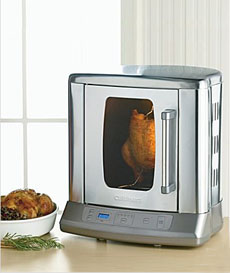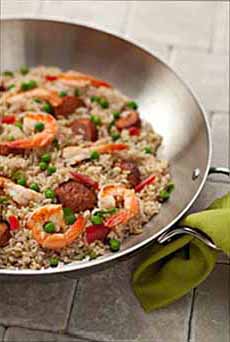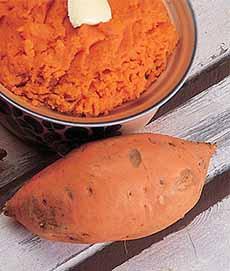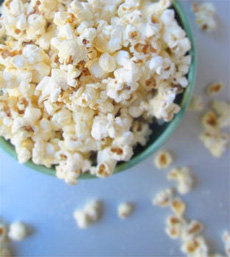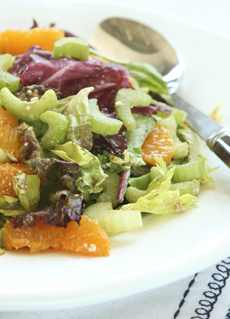|
Some people don’t eat more whole grains because they take too long to cook.
But with a pressure cooker, brown rice is ready in 10 minutes, beans in 20 minutes (and really long cookers like short ribs in 40 minutes).
Start your healthy New Year with a pressure cooker. We love our top-of-the-line Kuhn Rikon pressure cooker, but there are less expensive (and smaller) alternatives like this Presto pressure cooker for $29.99 (we haven’t tested it).
As a rule of thumb, an hour in a conventional pot becomes 20 minutes in a pressure cooker.
With a pressure cooker, there is no need to pre-soak your beans. Hearty and healthy beans ready in 40 minutes are difficult to pass up!
HOW TO COOK BEANS IN A PRESSURE COOKER
1. RINSE the beans under running water. Place them in a pressure cooker and cover with liquid to 2 inches above the top of beans. For more flavor, use stock or broth instead of water. You can also add dried herbs.
2. COOK for 20 minutes under high pressure. Remove the lid of the pressure cooker and cook for another 20 minutes or so, stirring and testing occasionally. Depending on the beans, they may be finished well before 20 minutes; so keep checking until you reach your desired texture.
3. DRAIN, season and serve.
TIPS
Here’s a list of pressure cooking times for beans, rice, meat, vegetables etc.
Here are an overview of pressure cooking and a review of our Kuhn Rikon Ecomatic pressure cooker.
Check out different types of beans in our beautiful Bean Glossary.
|
|
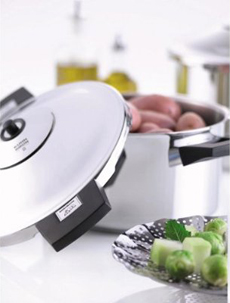

[1] A pressure cooker helps us eat healthier: beans, brown rice and other whole grains are a snap (photo courtesy Kuhn Rikon). [2] If you have a bay leaf, toss it in the pot. It pairs well with different types of beans, below (photo of bay leaf on the tree courtesy Doobee). Here are the different types of bay leaf. |
HERB & BEAN PAIRINGS
Here are pairing suggestions from The Kitchn:
Black beans: bay leaf, chile peppers, cilantro, coriander, cumin, epazote, garlic, ginger, oregano, parsley, savory, thyme
Black-eyed peas: bay leaf, cayenne, chile peppers, cinnamon, cloves, coriander, cumin, ginger, turmeric
Cannellini beans: parsley, sage, savory, tarragon, thyme
Chickpeas (garbanzo beans): cardamom, cilantro, coriander, cumin, fennel, garlic, ginger, mint, paprika, parsley, rosemary
Fava beans: basil, cilantro, cumin, fennel, garlic, mint, parsley, rosemary, sage, savory, thyme
Flageolet beans: parsley, savory, thyme
Kidney beans: bay leaf, cumin, fennel, oregano, parsley, sage, savory, thyme
Lentils: bay leaf, cardamom, cilantro, cinnamon, cloves, coriander, cumin, curry, ginger, mint, parsley, oregano, thyme, turmeric
Lima beans: cilantro, mint, parsley, sage
Navy beans: basil, bay leaf, garlic, parsley, savory, thyme
Pinto beans: chile peppers, cilantro, cumin, oregano, parsley, savory
|
|
